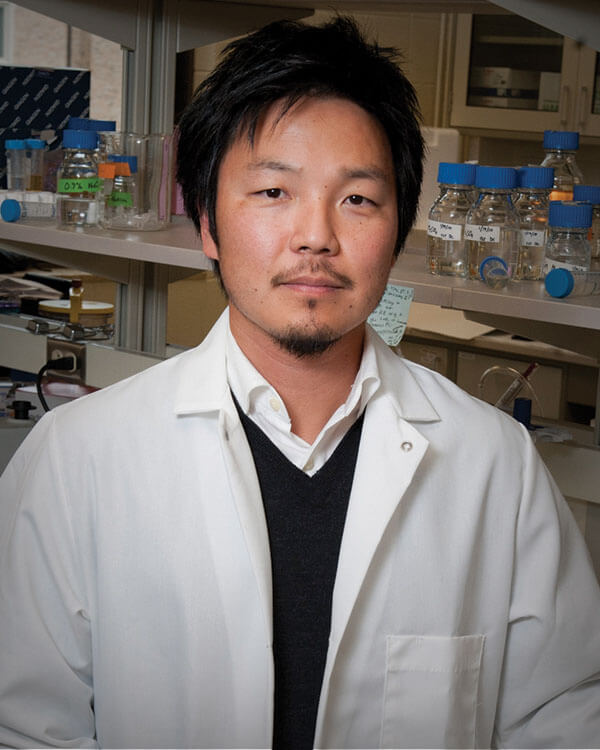Shaun Lee

Monahan Family Associate Professor of Biological Sciences
Contact
325 Galvin Life Science Center
Shaun.W.Lee.310@nd.edu
574-631-7197
http://www3.nd.edu/~leelab/
Research Cluster
Discovery, Characterization and Use of Bacteriocins
Small peptides provide an untapped source of structural diversity much needed in pushing the frontiers of discovering new small molecule therapeutics (i.e. drugs). Peptides that are produced ribosomally by bacterial organisms are broadly known as bacteriocins. These bacteriocins comprise a large class of peptide families that have been shown to be effective as antibiotics, food preservatives, anti-infectives and anti-cancer therapeutics. With rapid advances in genomics and natural product discovery, we are currently seeing a tremendous 'explosion' in the identification and use of these ribosomally produced bacterial peptides for drug development. Our research efforts over the past several years have focused on gaining a better understanding of the role of bacterially produced peptides known as bacteriocins in overall microbiology and disease. Given their enormous diversity, studying these bacteriocins in the context of their role in human disease, as well as their functions in host commensalism and microbial competition will offer tremendous potential for discovery of future therapeutic strategies such as novel antibiotics, anti-infectives, and possible cancer treatments. Furthermore, our research efforts will allow us to use the untapped diversity of bacteriocins in a high-throughput manner to 'screen' for new scaffolds against a disease/target of choice in microbial, mammalian, and plant systems. Our lab utilizes bioinformatics, genetic, biochemical and biophysical tools to gain a better understanding of the structure, function, and mechanisms of biosynthesis of these bacterial peptides. These insights will allow us to devise strategies for the robust production of diverse artificial bacteriocin libraries in high yield. These strategies will greatly expand the chemical repertoire of existing compounds, and open significant avenues into new drug research.
Publications
- "Synthetic antimicrobial peptide tuning permits membrane disruption and interpeptide synergy" Fields F.; Manzo, G.; Hind, C.; Janardhanan, J.; Foik, I.; Do Carmo Silva, P.; Balsara, R.; Clifford, M.; Vu, H.; Ross,, J.; Kalwajtys, V.; Gonzalez, A.; Bui, T.; Ploplis, V.; Castellino, F.; Siryaporn, A.; Chang, M.; Sutton, J.; Mason, A.; Lee, S.W. ACS Pharmacol Transl Sci. 2020, 3(3), 418-424. *Featured on cover
- "Novel antimicrobial peptide discovery using machine learning and biophysical selection of minimal bacteriocin domains" Fields, F.R.; Freed, S.D.; Carothers, K.E.; Nafiz Hamid, M.D.; Hammers, D.E.; Ross, J.N.; Kalwajtys, V.R.; Gonzalez, A.J.; Hildreth, A.D.; Friedberg, I.; Lee, S.W. Drug Dev Res. 2020, 81(1), 43–51. *Featured on cover.
- "Rational design of syn-safencin, a novel linear antimicrobial peptide derived from the circular bacteriocins safencin AS-48" Fields, F.R.; Carothers, K.E.; Balsara, R.D.; Ploplis, V.A.; Castellino, F.J.; Lee, S.W. J Antibiot, 2018, 71(6), 592-600.
- "A multiparametric computational algorithm for comprehensive assessment of genetic mutations in mucopolysaccharidosis type IIIA (Sanfilippo syndrome)" Ugrinov, K.G.; Freed, S.D.; Thomas, C.L.; Lee, S.W. PLoS One, 2015, 25(10), e0121511.